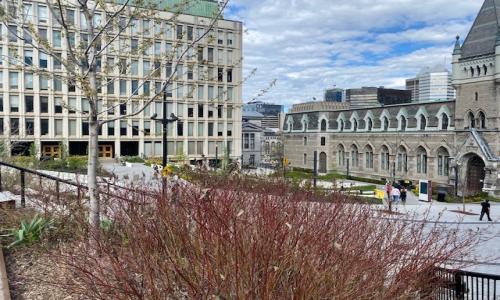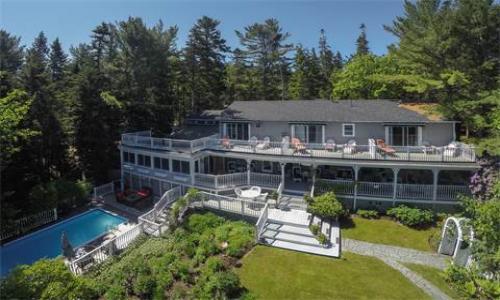In April 2009, the Obama Administration launched the Home Affordable Refinance Program (HARP). This program was part of a broader effort, known as the Making Home Affordable Program (MHA), whose stated purpose is “…to help homeowners avoid foreclosure, stabilize the country’s housing market and improve the nation’s economy.” HARP was designed exclusively for conventional, fixed rate loans backed by Fannie Mae or Freddie Mac, specifically those that had been securitized before June 1st, 2009. Borrowers that had not missed any payments on their mortgage in the prior six months and had not previously participated in HARP were eligible. Whether the borrower’s current lender was a part of the program was irrelevant; any lender participating in HARP could be chosen by the borrower, thus giving customers the option to shop around for the best rate as they would in a normal refinance process. The intent of HARP was to give the millions of borrowers who owed more on the mortgage than their home was currently worth, that is borrowers who were “underwater”, the chance to refinance. Without HARP such borrowers would have little or no chance at refinancing given the unwillingness of financial institutions to work with them.
HARP proved to be effective, but it became clear that certain restrictions in the program were preventing a larger pool of needy borrowers from accessing its benefits, so a second version, creatively titled HARP 2.0, was launched in March 2012. This iteration greatly expanded the number of eligible homeowners by removing the limits that had been in place on how far underwater a borrower could be in order to qualify; this included doing away with the previous loan to value (LTV) cap of 125%. An attempt at streamlining the procedure was also made, as most homeowners would no longer be required to have an appraisal or have their loan underwritten; these modifications, along with the elimination of certain fees, served to make the process less expensive as well as less time consuming. This new and improved HARP achieved even greater success than its predecessor; more loans were refinanced under the new rules in the first five months of 2012 than had been during all of 2011. Particularly effective was the abolishment of the LTV cap of 125%; according to an independent study by CoreLogic, a global consumer information and analytics company, of the 11.1 million borrowers underwater when HARP 2.0 was launched, 6.7 million had only a single lien on their property. The average LTV for these homeowners: 130%. For homeowners with additional liens, such as home equity loans (HELOCs), the average LTV of the combined loans was even higher, at 138%. Clearly the previous LTV cap was a hindrance to access to HARP for a significant number of the very borrowers the initial program was intended to target.
Not everything about HARP 2.0 worked out as planned, however. The removal of the LTV cap was met with a less than enthusiastic response by the institutions which comprised the mortgage lending market, Wells Fargo, the largest of the group, in particular. Taking advantage of a loophole in HARP that permitted individual lenders to add their own requirements, called overlays, to those mandated by HARP, Wells Fargo announced that it would not refinance loans under HARP 2.0 which exceeded an LTV of 105% with a single lien or 110% with multiple liens that it did not already service. The resultant guidelines issued by the bank, more restrictive than had been expected, were also more restrictive than the first version of HARP. Given Wells Fargo’s status as the home mortgage industry leader –they had been responsible for nearly 25% of all residential mortgages in 2011- this development was especially troubling. Although the volume of loans through HARP had clearly increased under the new directives that volume was not as high as it could have been if the banks had not been allowed to supersede the specifics of HARP 2.0.
Another problem with both iterations of HARP is that only mortgages securitized by Fannie Mae or Freddie Mac are eligible for refinance consideration. According to a study by the Center for Responsible Lending (CRL), loans known generically as Option ARM which had been sold to consumers with low initial interest rates and the option to make minimum monthly payments or interest only payments, had led to an epidemic of negative amortizations. Negative amortization occurs when the borrower chooses to make minimum monthly payments which don’t cover the interest due for the month. The difference between the minimum monthly payment and the full payment is added to the outstanding principal balance leading to a loan total that would actually increase, or negatively amortize, instead of decrease, like a normal loan would. This feature, combined with the adjustability of the initial rate, generally to a level that the borrower simply couldn’t afford, led to a significant percentage of the underwater mortgages that occurred during the housing crisis, many of which resulted in foreclosures. According to the CRL, “foreclosure rates are consistently worse for borrowers who received high-risk loan products that were aggressively marketed before the housing crash, such as loans with prepayment penalties, hybrid adjustable-rate mortgages (ARMs), and option ARMs.” Loans of this type were not sold to Fannie Mae and Freddie Mac, but instead were securitized through sales to private investors, thus making them ineligible for HARP. The riskiest loans, therefore, are not eligible to be refinanced by the Obama administration initiative.
The maneuverings of banks like Wells Fargo to avoid those aspects of HARP 2.0 which failed to meet with their approval, combined with the lack of access to HARP for those borrowers saddled with the most onerous types of loans that had been issued prior to the housing crisis have led some to call for HARP 3.0. Addressing the shortcomings of HARP 2.0, however, will likely prove problematic. An expansion of HARP to cover those mortgages not backed by Fannie Mae or Freddie Mac would involve the government once again entering the market to back risky investments; this is unlikely to prove popular. Forcing the banks to adhere to all tenets of HARP will also represent a challenge as financial institutions are not required to participate in the program. An attempt to force those that do participate to follow the exact letter of the program could potentially lead to banks simply refusing to take part altogether. The most effective proposal currently being discussed is an adjustment to the securitization deadline from June 1st, 2009 to June 1st 2010. This would serve to help homeowners who are ineligible for no other reason than they had missed the cutoff date and would not lead to the alienation of the very lenders needed to facilitate the program or involve a government bailout. While not a perfect solution, it is a logical one that involves no risk for a clearly identifiable reward.
Everything possible needs to be done to heal our housing market as its struggles is at the very core of our country’s overall economic problems. Without a healthy housing market we will not have a healthy economy and this long, painful recovery will remain just that: long and painful. A simple adjustment to the deadline represents a small price to pay for what could be a significant step towards segueing from recovery to robust economic growth.












Add your Comment
or use your BestCashCow account